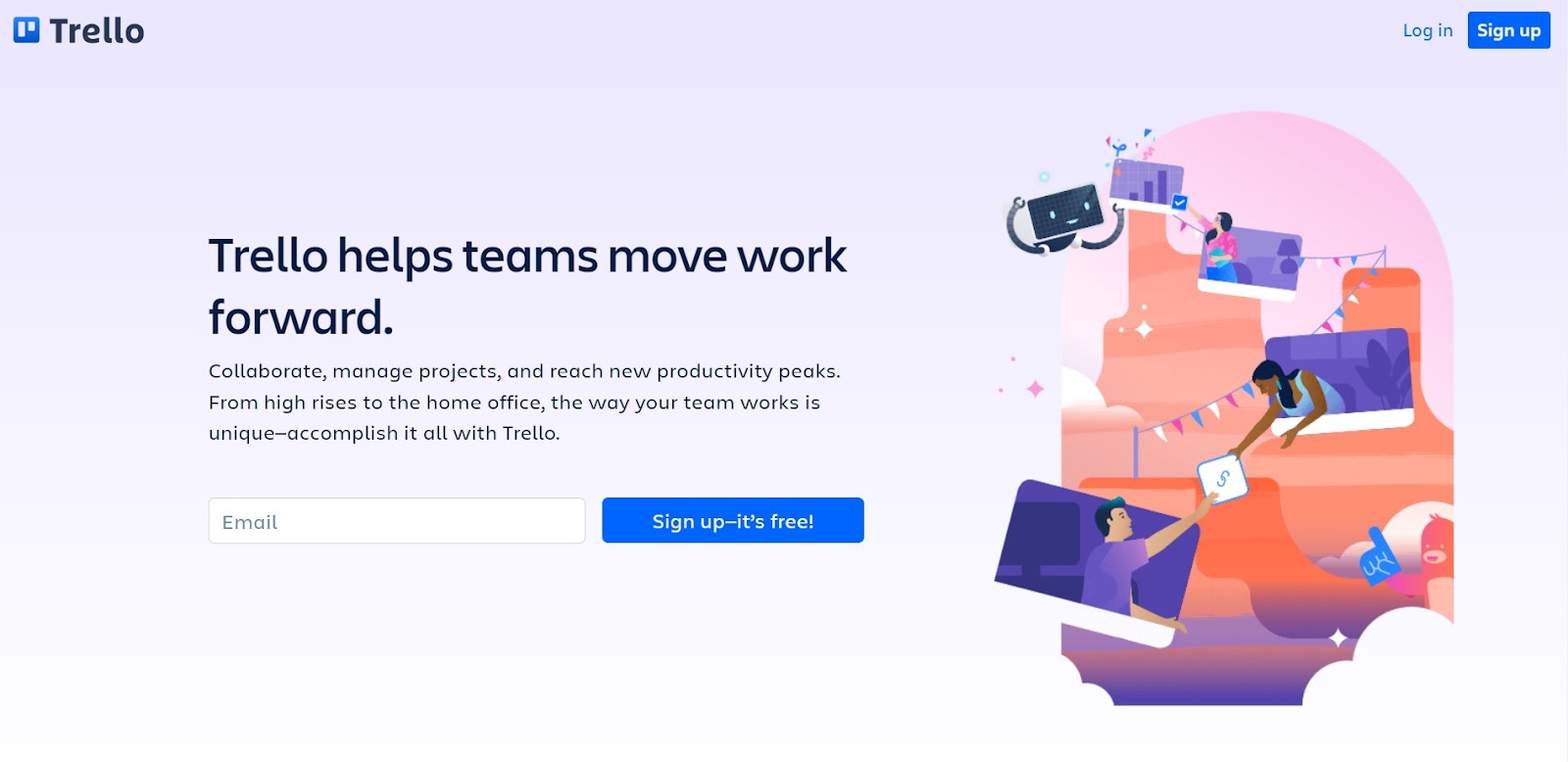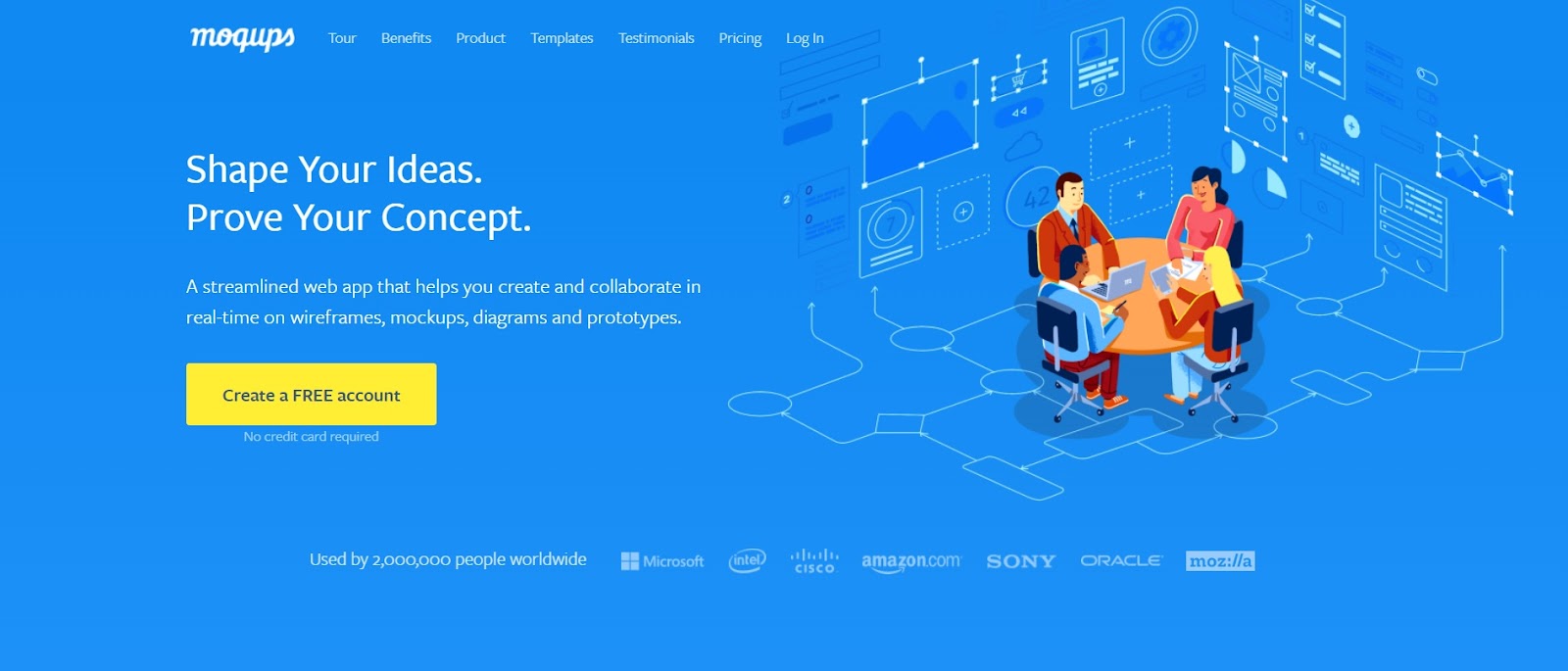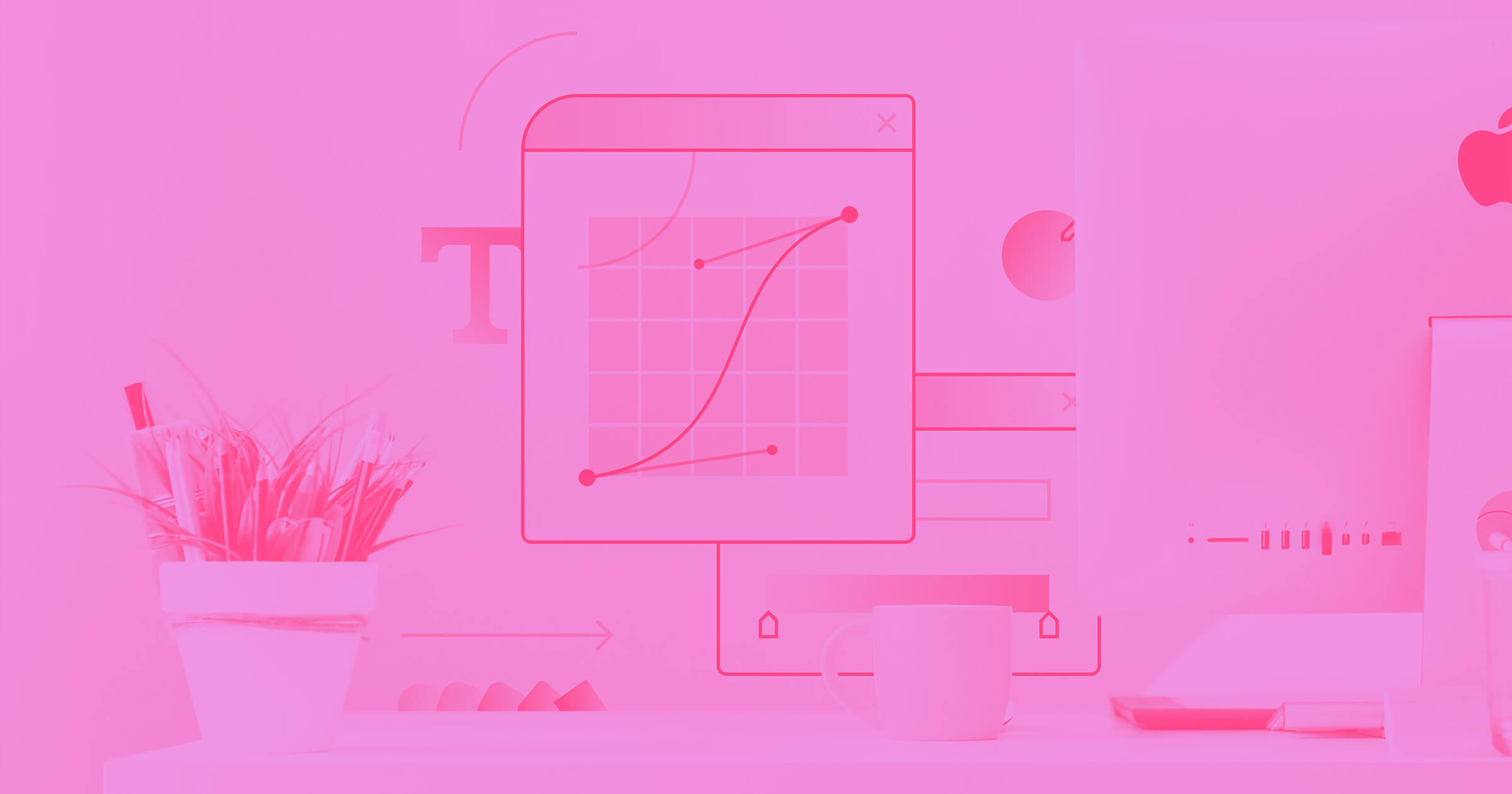The more people you have working on a project, the more difficult it becomes to keep track of everything, communicate clearly, and meet deadlines.
To stay on top of things, you’ll need the right software. Here’s our rundown of some of our favorite design collaboration tools.
Why do you need design collaboration tools?
The archetype of a creative genius who comes up with brilliant work in seclusion can be appealing. But the problem is that this idea is completely detached from reality. When it comes to design, it’s simply not how the process works.
Sure, maybe you could get away with this “lone wolf” mentality in some instances, but managing projects in large organizations or working with clients typically requires input from multiple stakeholders.
Plus, designers in large organizations often collaborate with other departments such as product, marketing, and even legal. That’s why design collaboration tools are an absolute necessity.
With the right design collaboration tools, you can:
- Collaborate with other designers on your team in real-time. There’s no need for endless email exchanges, Slack discussions, or office debates. You can simply try things out together and see what works and what doesn’t. It not only saves time, but also fuels creativity.
- Collaborate with clients or other teams in your organization. When your clients and internal team members have access to your design collaboration tools, they can monitor progress and provide feedback throughout the project. This helps spark new ideas and prevent last-minute issues that could have been caught sooner.
These tools also make it much easier to work with a distributed team.
11 best design collaboration tools
1. InVision

InVision is one of the most popular design collaboration tools out there, with over 7 million users worldwide, including 100% of the Fortune 100 list.
InVision’s main value proposition is that it allows you to quickly design interactive prototypes (with limited functionality) that you can show to other stakeholders.
That can be especially helpful to show other team members or clients how a website or app will work while working through the design process.
Though it’s probably easy for you as a designer to visualize the final product, it’s important to remember that it can be challenging for someone with no design experience.
By showing them an interactive prototype, you’ll be able to better convey what you have in mind.
2. Balsamiq

Balsamiq is a design collaboration tool that allows you to create wireframes for websites and web, desktop, and mobile apps.
The company sees itself competing with pen and paper when it comes to quickly sketching out low-fidelity wireframes. For them, it’s not about the details — it’s about the speed.
Due to its simplicity, this tool is accessible to designers and entrepreneurs, developers, and product managers.
This is a great option for working together with people who don’t have design experience and might find more sophisticated UX design tools such as Adobe XD or Figma intimidating.
3. Figma

Figma is a popular design tool among professional designers due to its versatility.
You can use it to create low-fidelity designs, high-fidelity designs, animations, interactive prototypes, and more. It’s an all-in-one design platform.
One of my favorite parts of Figma is that it allows you to share design prototypes via shareable links. This is convenient because it’s the most straightforward way to show your work to someone. They don’t need a Figma account to access it, just an internet connection.
You can also use this app to create a design system that stores all your design assets (backgrounds, icons, fonts, etc.) in one place.
Plus, Figma has a separate product called FigJam, which is an online whiteboard for teams. You can use it to brainstorm ideas, map out user journeys, or guide team meetings.
4. Filestage

Filestage is a project management tool that focuses on review, feedback, and approval management.
If you often find yourself stuck in an endless back-and-forth via email, struggle to keep track of all the feedback, and are constantly chasing down stakeholders to get the green light — Filestage could be a great solution.
Filestage can help bring order to all this chaos by providing a platform where you can share design files with other stakeholders, collect their feedback in one place, and get your work approved once that feedback has been incorporated.
5. Mockplus

Mockplus offers several design tools.
Mockplus Classic is a desktop application that allows you to create designs for web and mobile apps. It emphasizes speed. You can use various ready-made components to get work done quickly. As a bonus, there’s also a Sketch integration.
Mockplus Cloud is a collaboration platform that helps product managers, designers, and developers work together.
Mockplus DS is a web app that helps you create and manage design systems. You can gather all your design assets in one place, ensure that everyone can access the most recent version of your design system, create security permissions, and more.
By combining all three apps — you’ll be able to reach every point of your collaboration needs, making it a great one-stop shop for tools.
6. Webflow

Webflow offers a completely visual canvas that allows you to take advantage of everything HTML5, CSS3, and Javascript offer without writing a single line of code.
You can use the drag-and-drop visual editor to create the web design you want while Webflow automatically writes clean, semantic code that’s ready to publish or hand it off to developers.
Additionally, you’re free to enhance Webflow by adding your custom code to your website.
We’ve also introduced a team collaboration functionality with two modes:
- Design mode, which allows you to build the structure of your website and create its design.
- Edit mode, which allows you to edit the content of your website.
In Webflow, only one person can be in the Design mode at any given time, with the person in design mode having complete design control.
Other team members can request take over design control so that they can contribute to creating site structure and design.You’re also able to see what other team members are working on in real-time. To learn more about collaboration in Webflow, check out the Collaborate in Webflow the Designer lesson.



















Why your design team should use Webflow
Discover how design teams are streamlining their workflows — and building better experiences — with Webflow.
7. Red Pen

Red Pen is a visual feedback tool created by professional designers who got tired of collecting feedback via multiple channels.
The founders of Red Pen realized that they needed a simple way of soliciting feedback and gathering it all in one place.
This app allows you to:
- Share your design
- Add comments to it that explain your reasoning
- Invite people to provide feedback by adding their comments
- Use version control to keep track of all revisions and iterations
Red Pen is strictly a visual feedback tool with a narrow, well-defined scope — and according to the team, they have no intention of changing that.
8. Miro

Miro is a collaborative whiteboard platform with 30+ million users worldwide.
It offers an infinite canvas that can be used for brainstorming, planning, designing, teaching, and running team meetings.
Miro provides templates for a ton of use cases, so there’s no need to draw everything from scratch.
Additionally, you can use Miro’s whiteboard in real-time and asynchronously — making it a perfect tool for distributed teams.
9. Asana

Asana is one of the most popular project management tools, with 119,000+ paying customers and millions of free users worldwide.
It allows you to:
- Choose from several views, including the board view, list view, and timeline view
- Create customized workflows
- Automate repetitive tasks
- Keep all communications in one place
- Track progress with charts
Asana is a powerful software with everything you need to manage big projects in a large organization.
Given its large amount of functionality, it’s probably best for those in larger organizations who require that amount of depth and collaboration in their project management software.
10. Trello

Trello is another popular project management app used by over a million teams worldwide.
Unlike Asana, Trello is based on the Kanban board task management method that divides a work board into three columns: “Waiting,” “In Progress,” and “Completed.”
Trello allows you to create virtual Kanban boards that can be as complex as you want. You’re not limited to the classic three-column approach.
The digital cards in Trello indicate the task that needs to be done and provide all the information associated with it, including file attachments and comments — allowing you to do everything in one place.
The Kanban board task management method is easy to understand, making Trello accessible to people who haven’t used project management apps before.
11. Moqups

Moqups is a design collaboration tool with 1.5+ million users worldwide and offers whiteboard, diagram, and wireframing features.
It allows you to brainstorm ideas, quickly sketch a prototype, show it to other stakeholders, get their feedback, make adjustments, and then hand it off to the development team once you are done.
Moqups is a simple yet powerful tool with an intuitive user interface. It’s an excellent option for people who don’t have any design experience, so it’s worth considering if you want to make it easier for other teams to communicate their ideas visually.
Communication is the best tool
Design collaboration tools can help you increase your team’s productivity, but at the end of the day it's all about communication.
Even with the best tools, you can still struggle if you don’t know how to communicate effectively.
Setting and managing expectations, giving and receiving clear feedback, and motivating people to work together towards a common goal will make collaboration much easier, no matter what tools you decide to use for it.































